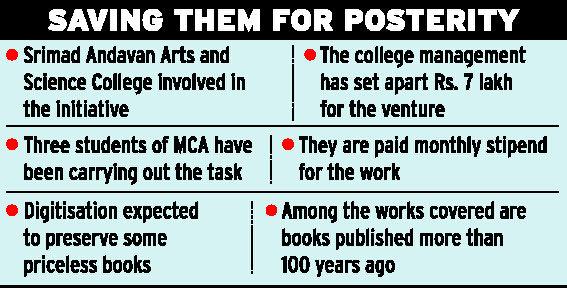
From Coimbatore to Chennai, from father to daughters… the Sri Krishna Sweets story continues as M. Murali’s children give a new twist to the business
If the Sri Krishna Sweets store on Venkatanarayana Road in T. Nagar is abuzz with activity, the tiny office at the back is quiet except for managing director M. Murali’s voice giving orders. The room is painted white, making it seem smaller than it already is and in it sits Murali clad in a white shirt. The garlanded pictures of gods that adorn the walls lend a little colour to the room.
The soft-spoken Murali recalls the opening of his first shop in Chennai in 1996: “There was a steady crowd from 7 a.m. to 10 p.m. in front of the shop; it gave me a lot of energy, confidence and faith that made me realise that I can turn my dreams into reality.” And they have indeed, with 42 outlets in the city that include restaurants specialising in South Indian cuisine.
“You walk into a fast food outlet and you just pick up a pizza or a packet of French fries or a burger, you hardly give food like kozhukattai or the boli a thought. What we’ve done is give these a twist. For example, the Bolizza is our take on the pizza and has both sweet and spicy versions,” he explains. “Simply put,” Murali says, “we’ve taken their concept and incorporated our culture.” They also plan to offer bondas and kara appams as alternatives to French fries, and mor kali instead of pastries. According to Murali, their idea is to show that Indian foods can also be suited to fast living and that the notion of fast food merely indicates the time it takes to prepare and not the origin of the food itself.
Speaking about appealing to youngsters, Murali’s face lights up when he talks of his two daughters joining the family business. “I’ve been in the business since I was 11 or 12; it’s similar for them since they were brought up in the same atmosphere.”
Twenty-one-year-old Sneha Murali describes herself as “not bookish. My father always encouraged me to focus more on work than on education; but both were equally important while growing up.” The younger of the two girls, she says that working with your father has its pros and cons, “Most of the time work becomes dinner-table conversation,” she laughs and adds that it’s tough on days when you’re mad at both your father and the boss. But all that doesn’t come in between what she’s learnt from her father. “He taught me that it’s alright for two people to disagree on something. And he still listens and respects any idea irrespective of the size of it or the person who offers it,” she says.
Sneha remembers when she’d gone to Berkeley for a summer programme and came back brimming with new concepts, especially a store-in-store, “it’s like a food court where you can buy podis, sweets, kaarams and more. It’s a work in progress at Sri Krishna Sweets,” she says.
Shruthi, the older daughter who looks after the Food Products Division, has a quiet aura about her, much like her father. She talks about how joining her father in business was a natural course of action. Shruthi reveals that she is passionate about making traditional sweets appealing to her generation.
“We go out often to eat and I realise that youngsters prefer something that’s light on the stomach, healthy but tasty and that’s what we’re trying to do. We’ve launched something called Cashew Bites that’s like soan papdi and we’re planning to bring out a halwa made using ragi,” she says. For someone who has been working for two years with her father, Shruthi, a graduate of the Cass Business School in London, says that she still has so much to learn from him and the biggest lesson he has taught her was to “criticise a person’s performance rather than the person himself.”
Murali couldn’t be happier that his daughters have joined him, “It’s the hospitality business and I believe that women bring strengths to the table such as good values and a knack for personalisation.” And it’s not just the daughters who are learning from the father. Murali says it’s sometimes difficult to keep up with them: “They bring systemisation and in five-six years there will be more opportunities for them.”
Sri Krishna Sweets was started by his father N.K. Mahadeva Iyer in 1948 to overcome the absence of a standalone sweet shop that offered pure ghee sweets in Coimbatore.
“Our goal is to be a part of the customer’s family and so our concept is ‘engellam sandosham irukko,angellam Sri Krishna Sweets irukkanum’ (where there is happiness, there will be Sri Krishna Sweets),” he says.
source: http://www.thehindu.com / The Hindu / Home> Features> MetroPlus > Society / by Apoorva Sripathi /Chennai – September 11th, 2014





